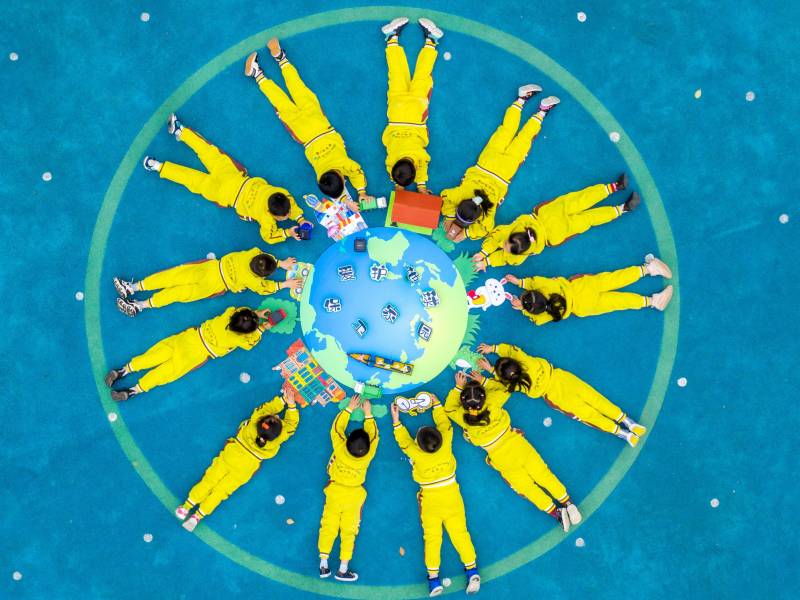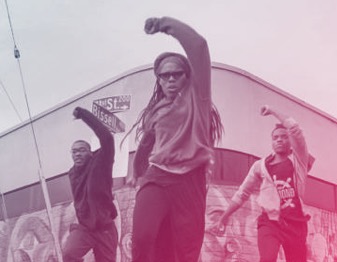Douglas Trumbull’s postapocalyptic thriller, created just two years after the first Earth Day in 1970, starts in the not-too-distant future with Earth’s last surviving plant life preserved in space pods—giant geodesic domes attached to massive space freighters—for eventual return to use to reforest the planet. Bruce Dern is one of the caretakers when the cargo company decides it wants its freighters back, and starts jettisoning the pods. Aided by three droids—Huey, Dewey and Louie—Dern engages in some creative sabotage to foil their attempts and save the last vestiges of Earth’s ecosystem. (Watch on Amazon Prime Video). — Bob Mondello, TV critic
“Mercy, Mercy Me (The Ecology)”
What I love about this song—and the entire What’s Going On album—is how it tackles a serious issue without a hint of preachiness or condescension. (*cough* Common *cough*) It emanates palpable concern and weariness for the state of the environment and is a musical poem with no real chorus, only the repeated, deeply relatable sigh of “mercy, mercy me” in between laments about “overcrowded land” and its “abuse from man.” The gift and curse of this song is that it’s even more relevant today than it was 50 years ago. (Listen on YouTube.) — Aisha Harris, co-host Pop Culture Happy Hour
WALL-E
Apparently, humans never changed course on pollution, and sometime in the 22nd century they were forced to leave a planet they had turned into a giant garbage dump. But they left without turning off a trash-compactor-on-treads robot they’d left behind—a Waste Allocation Load-Lifter: Earth Class, or WALL-E—who has, over the course of 700 years, developed a personality. Pixar’s digitizers made the first hour at once a bleak vision of our future, and an enchanting Chaplinesque love story as WALL-E falls for EVE—an Extra-terrestrial Vegetation Evaluator. (Watch on Disney+.) — Bob Mondello, TV critic
Life in Color with David Attenborough
Everyone’s favorite rumpled British naturalist is back, in a two-part docuseries about the way animals use color to warn off and/or hide from predators and find mates. Attenborough’s trademark warm, inquisitive voice has grown a bit thinner with age, but it’s still supple enough to convey his wonder at, and delight in, the natural world. And what a world this series captures, bursting with dazzling, shifting colors, courtesy of new camera technology that can approximate those aspects of the color spectrum normally invisible to us. A third episode offers a behind-the-scenes peek at how the documentary crew managed to capture some of the series’ most striking images. (Find it on Netflix.) — Glen Weldon, co-host, Pop Culture Happy Hour
Learning, Recycling, and Becoming Little Heroes
Author and activist Gale Glover was researching the Flint water crisis when she became inspired by how the city’s children have coped and changed with the environmental challenges that now define their hometown. You can hear Glover, who herself grew up in Flint, discussing the resilience of those kids in her thoughtful and uplifting 2016 children’s book, Learning, Recycling, and Becoming Little Heroes in this interview on the Michigan Radio program Stateside. (You can find the book at your local library or independent bookstore, or here.) — Neda Ulaby, reporter
An Inconvenient Truth
Yeah, yeah, I know. You think it’ll be like watching paint dry to hear Al Gore talking about global warming. Well, the film turns out to be pretty amazing, and very smartly done, with computer graphics that make the story he’s telling far scarier and more immediate than the Hollywoodized one in, say, The Day After Tomorrow. I remember at the premiere, not a soul got up during the credits because they were riveted, believe it or not, by an environmental “to do” list. (Watch it on Amazon Prime Video or Paramount+. ) — Bob Mondello, TV critic
Artists Christo and Jeanne-Claude
You might not think of the artists Christo and Jeanne-Claude as ardent environmentalists, but the two cared passionately about how their famous works of art interacted with nature. As I wrote in this 2015 review of 5 Films About Christo and Jeanne-Claude for NPR, they “enveloped the Pont Neuf in Paris within acres of shimmering fabric, curtained a Colorado valley, dotted the coastal landscapes of California and Japan with brightly colored umbrellas, circled 11 Biscayne Bay islands with electric-pink sheeting and ran an enormous white nylon fence through 24 miles of ranch land in the U.S. West.” In a series of documentaries now viewable on the Criterion Channel, filmmakers Albert and David Maysles “draw viewers into the artist duo’s world of stunning vision, bullheaded stubbornness, flower-child flights of fancy and mind-bending logistics.” (Find the documentaries here.) — Neda Ulaby, reporter
My Octopus Teacher
A documentary filmmaker goes deep inside an underwater kelp forest where he encounters—and then makes friends with—a mysterious sea creature. It sounds like something a Disney animator may have dreamed up, but it’s actually an apt description for Craig Foster’s Oscar-nominated Netflix film. Come along as Foster freedives into the chilly waters off South Africa. My Octopus Teacher is a true reminder of the value of slowing down and immersing yourself (literally) in the natural world. (Find it on Netflix). — Bridget Bentz, producer
Forty Signs of Rain

9(MDAxOTAwOTE4MDEyMTkxMDAzNjczZDljZA004))

